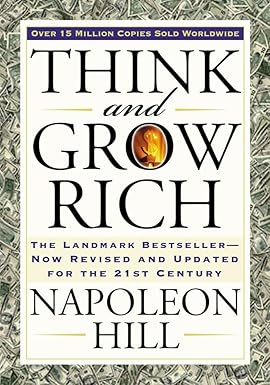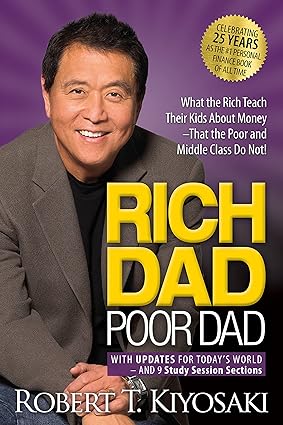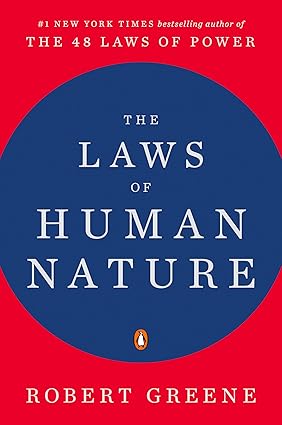By Napoleon Hill, Revised and Updated Edition
Few personal development books have had the global influence and lasting power of Think and Grow Rich by Napoleon Hill. First published in 1937 during the Great Depression, Hill’s classic has sold millions of copies worldwide and inspired generations of entrepreneurs, leaders, and motivational thinkers. The revised and updated edition for the 21st century seeks to modernize Hill’s ideas without losing the essence of the original, aiming to make the content more relatable and actionable for today’s readers.
In this review, we’ll explore the strengths and weaknesses of the revised edition, consider how the book applies to contemporary readers, and assess whether Think and Grow Rich remains relevant in the digital age.
Overview
Think and Grow Rich is not merely a guide to wealth; it’s a comprehensive exploration of success principles that transcend money. The book is the result of Napoleon Hill’s 25 years of research into successful people, during which he interviewed hundreds of the most influential figures of the time, including Andrew Carnegie, Henry Ford, and Thomas Edison.
The core idea of the book is that success, wealth, and achievement begin in the mind. Through 13 principles—such as desire, faith, autosuggestion, specialized knowledge, persistence, and the power of the mastermind—Hill lays out a blueprint for turning thought into tangible results.
The 21st-century edition includes modern commentary, new examples, and adaptations to reflect contemporary challenges, such as digital entrepreneurship and global business trends.
Pros
1. Timeless Principles of Success
One of the book’s most enduring strengths is its universal philosophy. The idea that success begins with belief, desire, and clear intention resonates across time and culture. Concepts like setting definite goals, using affirmations, and cultivating persistence are as applicable today as they were in 1937.
2. Revised for Relevance
The updated edition does a respectable job of modernizing Hill’s ideas. While much of the original language remains, the revisions clarify certain passages, update outdated references, and incorporate modern business examples. This makes the content more accessible to a 21st-century audience, particularly younger readers or those unfamiliar with early 20th-century figures.
3. Mental Conditioning and Mindset
Hill emphasizes the importance of belief systems and mental discipline—an approach now supported by psychological research in areas like neuroplasticity and behavioral science. The focus on visualization, self-talk, and mindset makes the book a valuable tool for self-motivation and goal-setting.
4. Inspirational Tone
The book’s tone is both motivational and authoritative. Hill speaks with conviction, and his optimism is contagious. Readers often find themselves inspired to think bigger, pursue their goals more vigorously, and believe in their potential.
5. Mastermind Concept
One of Hill’s standout contributions is the “mastermind group”—a small group of like-minded individuals who support each other’s success. This concept has been widely adopted by entrepreneurs, business coaches, and networking professionals and remains a pillar in the personal development space.
6. Structured Framework
The book’s 13-step formula provides a coherent and structured approach to personal achievement. Each chapter builds upon the last, creating a logical progression from mindset to action. This makes it useful not only as a motivational read but as a reference guide.
7. Broad Application
Although marketed as a guide to wealth, Hill’s principles apply to all forms of achievement—whether in business, education, art, or relationships. The book’s focus on desire, imagination, and persistence applies to nearly any goal.
Cons
1. Outdated Language and Tone
Despite revisions, some of the original 1930s phrasing remains. The formal tone and vintage expressions may feel archaic or verbose to modern readers. While the message still holds power, the delivery occasionally lacks the clarity and brevity expected in contemporary self-help writing.
2. Lack of Scientific Evidence
Hill’s philosophy leans heavily on anecdotal evidence and metaphysical ideas like the “infinite intelligence” or the “sixth sense.” There is little empirical support for many of these claims, which may not satisfy readers who prefer data-driven approaches to personal development.
3. Gender and Cultural Limitations
The original version was written in a male-dominated era, and the book occasionally reflects that bias. Women and minorities are almost entirely absent from Hill’s examples, and while the updated edition makes small efforts to diversify the content, it still feels limited in scope compared to today’s inclusive standards.
4. Overemphasis on Wealth
Although Hill claims the principles can be applied to all areas of life, the dominant theme is financial success. This can feel overly materialistic, especially to readers who value balance, well-being, or service-oriented careers. The title itself—Think and Grow Rich—may alienate those seeking fulfillment beyond money.
5. Vague Definitions
Some key concepts—like “faith,” “autosuggestion,” or “transmutation of sex energy”—are either vaguely defined or heavily metaphorical. While intriguing, these sections lack the clarity or practical examples needed for immediate application, especially for first-time readers.
Should You Learn from This Book?
Why You Should:
- You’re looking for a foundational personal development guide that has influenced nearly every modern self-help book.
- You want a structured approach to goal-setting, mindset, and discipline.
- You’re motivated by stories of success and want a timeless blueprint for turning vision into reality.
- You value persistence, desire, and action-oriented thinking as tools for personal achievement.
Why You Might Not:
- You prefer science-backed methodologies or dislike books that use spiritual or metaphysical language.
- You’re sensitive to dated language or lack of diversity in historical examples.
- You’re looking for highly specific, step-by-step business strategies rather than broad philosophical guidance.
Final Verdict
Think and Grow Rich: The Landmark Bestseller Now Revised and Updated for the 21st Century remains a cornerstone in the world of personal development. Its principles have stood the test of time, influencing countless readers and thought leaders. While it may show signs of its age and leans on faith-based and anecdotal reasoning, its core message—that your thoughts shape your reality—is more relevant than ever.
Whether you’re an aspiring entrepreneur, a student, or someone seeking clarity and motivation, this book offers a powerful mindset shift. However, it’s best approached as a philosophical and inspirational guide—not a manual of guaranteed techniques.
Recommended for: Ambitious readers, personal development enthusiasts, entrepreneurs, and dreamers.
Rating: ★★★★☆ (4.2 out of 5)
If you like, you can purchase it on Amazon.



